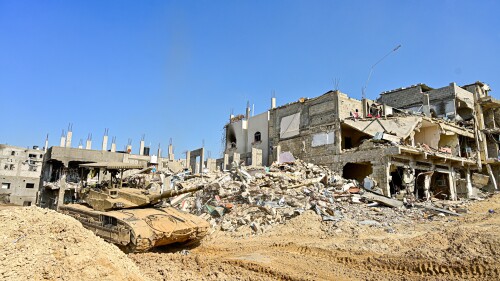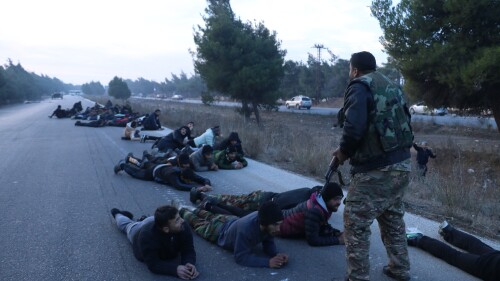The way appears to have been cleared for an invasion of north east Syria by Turkey and its allied Sunni Islamist militias. If such an invasion takes place, it will end one of the more successful partnerships achieved by US military diplomacy in recent years- namely that between the United States Armed Forces and the Kurdish Peoples’ Protection Units (YPG). It will also have profound implications, both strategic and tactical, for the US in the Middle East, and for the strategic balance in the region as a whole.
In June, I sat with a senior Syrian Kurdish official in the Iraqi Kurdish city of Suleymaniya. Did he expect, I asked him, that US forces would withdraw from the area under de facto joint US-Kurdish control? The man’s answer avoided emotionalism or rhetoric. ‘I don’t know. We hope not. But they may well leave,’ he said, before adding: ‘If they do, we have made it clear that the following day we will make a deal with the regime.’
The White House has ended one of the most successful US military partnerships ever. |
In April 2017, I asked a Palestinian activist supporter of the Syrian regime in Aleppo how Damascus would secure the return of the lands then and currently under the control of the Syrian Kurds and the US. ‘We don’t know,’ was his honest reply. ‘But we know that we will be returning there.’
Both men now have an answer to the questions that were perplexing them. Only the regime supporter is likely to be pleased with the outcome.
If Turkish and allied forces enter northern Syria, the immediate Kurdish concern will be at the prospect of widespread ethnic cleansing. The fear is well founded. Around 200,000 Syrian Kurds fled the advancing Turkish army and its Sunni allies when Erdogan destroyed the Kurdish Afrin canton in north west Syria in January, 2018. The Kurds expect that a repeat of this operation on a larger scale is currently brewing to the east.
To avoid it, they are likely (as my interlocutor in Suleimania suggested) to permit the Russians, the Assad regime and its Iranian allies to enter the areas presently under their control.
Kurdish civilians flee the city of Afrin in northern Syria in March 2018. |
There is no love lost whatsoever between the Assad regime and the Syrian Kurds. But Assad, the Russians and the Iranians have no interest in a large scale ethnic cleansing of Kurds, of the type a Turkish invasion is likely to produce.
Following the US announcement, there were already reports of a movement of regime and Russian forces toward the city of Manbij. An unseemly race for the spoils between the regime/Russians/Iranians and the Turks/jihadis appears set to start. The latest confused reports from the area suggest that a Turkish force has already penetrated the border in the Tel Abyad-Ras al-Ain area. ISIS, meanwhile, has emerged in Raqqa and is attacking SDF positions in the city.
Should the southern part of the area east of the Euphrates fall to the regime and its allies, the result will be the consolidation by Iran of its ‘land bridge’ from the Iraq-Iran border to Lebanon, the Mediterranean and the border with Israel. With pro-Iranian militias currently suppressing dissent in Baghdad, this will leave the Iran-led regional alliance as the major victor of the turbulent events in the Levant over the last decade.
Jonathan Spyer is director of the Middle East Center for Reporting and Analysis, and is a fellow at the Middle East Forum and at the Jerusalem Institute for Security and Strategy.









